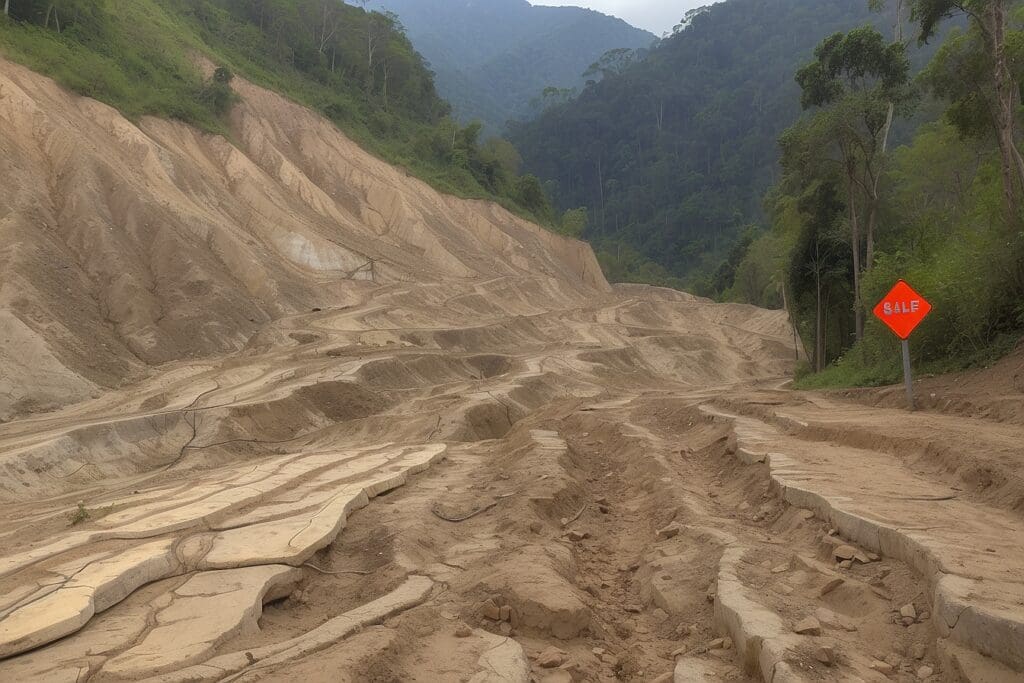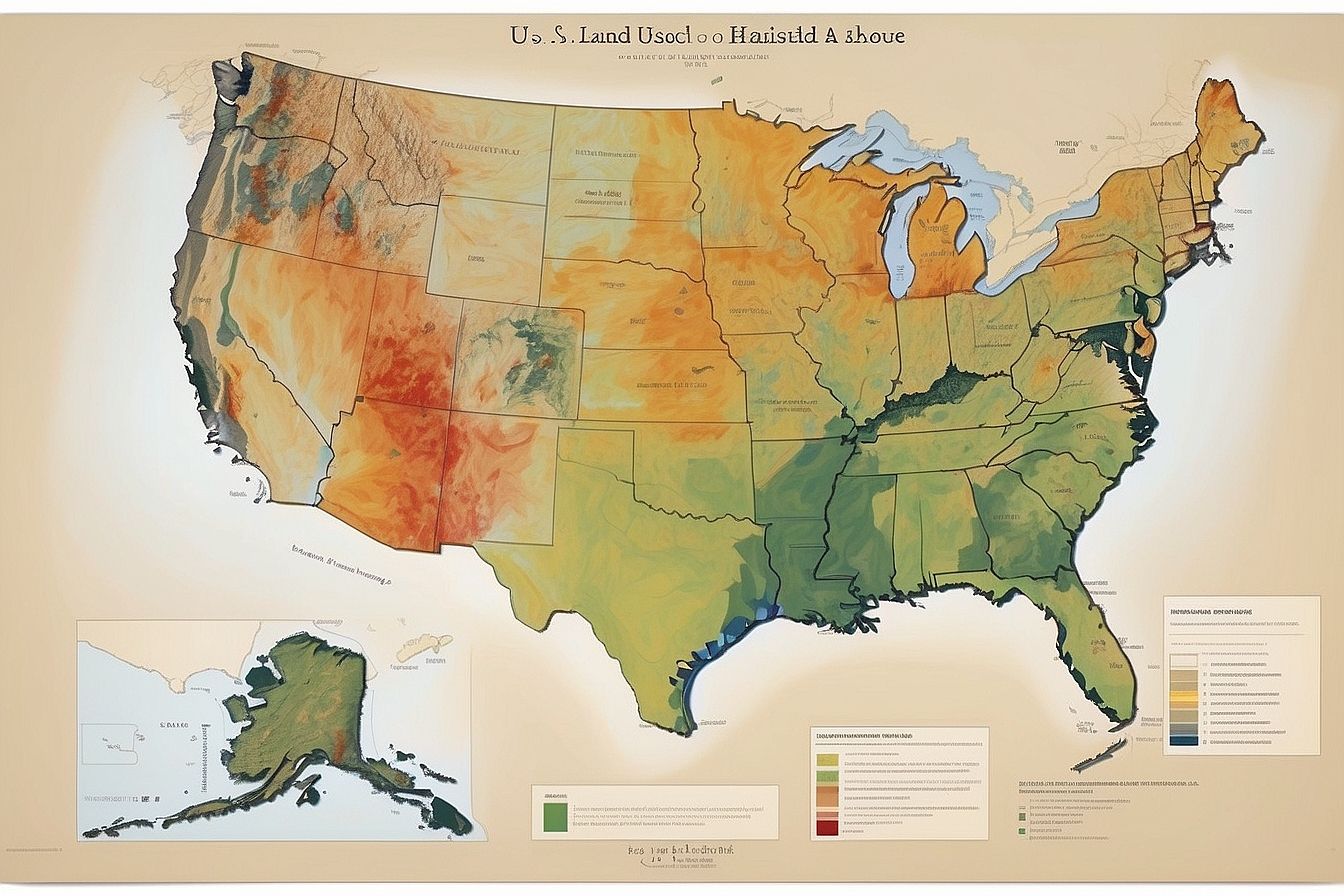If the last article on erosion did not get your attention, perhaps you will take erosion a bit more seriously when you see it forever alter infrastructure and entire housing communities. This time around, let’s look at more dramatic forms of erosion, including sinkholes, coastal erosion, and landslides. This does not discount the impact that gradual erosion has upon the environment, but when humans ignore erosion and geology, the results can be disastrous.
Sinkholes: Usually occurring in regions with partially soluble bedrock (such as limestone), sinkholes can be a small nuisance or incredible 2,172 ft deep formations such as Xiaozhai tiankeng in Chongqing, China.1 Water flows through soil, and if it becomes acidic it can then create sulfuric acid in limestone regions, which can dissolve the bedrock—this is known as “karst” topology. Over half of the U.S. is sitting on karst formations.2 As the bedrock dissolves, it is gradually carried away by the water and can form a void. This void may grow, and in some scenarios, create an underground cave. Once the cave reaches the surface, the results can be catastrophic and the ground may give way in a matter of seconds. In urban areas, broken water mains or sewage systems more commonly cause sinkholes, but changes in natural water systems can be just as much to blame.3
The image of the huge hole in the street is a 100-foot deep sinkhole in Guatemala that occurred on May 10th, 2010 and consumed a three-story building. This sinkhole, unfortunately, was not an isolated event—extreme rain at the time of the May sinkhole caused 140 landslides and falling boulders in the surrounding region.6 Alarmingly, many of the factors causing sinkholes are precursors for other land movement disasters.
Coastal erosion: Gradual soil erosion pales in comparison to coastal cliff erosion, especially as witnessed along the California coast. The U.S. Geologic Survey is monitoring a phenomenon known as “cliff retreat.” As the ocean rises, and intense storms cause rain and intense waves, the coast erodes away. This occurs at an average annual rate of one foot per year along the California coast, and at an average retreat of 60 feet over 70 years.7 Like sinkholes, soil is eaten away by erosion and the surface soil can become top-heavy. Eventually, the rim can give way and the results can mean dramatic destruction for those living along the coastal rim.

Given the popularity of living right along the coast, and with erosion rates of one foot per year, houses could be threatened every several years, depending on just how close the house is to the rim. This is a classic human versus nature scenario. As long as people demand to live in beautiful, but risky areas, destruction and reconstruction will continue to be a part of their lives.
Landslides: Also known as debris flows, landslides occur throughout the United States, but they are especially prevalent in coastal and mountainous states such as California, Oregon, and Washington. In the U.S., landslides cause approximately $3.5 billion dollars (measured in 2001) in damage, and kill 25-50 people annually.10 There are several types of landslides which vary based upon type and rate of movement, as well as whether they are caused by water, wind, or ice.
Perhaps one of the most dramatic and catastrophic of landslides is debris flow. Debris flows can be enormous in scope, and consume entire towns in a matter of minutes.12 As rainwater accumulates and flows down a slope, it takes some debris with it (soil, rocks, trees, etc). This mudflow then gathers more momentum as it moves down the hill and takes more debris with it. This process has the potential to gain tremendous momentum, and can snatch up boulders the size of cars once it really starts flowing.13
Certain areas in southern California are so prone to debris flows that they actually construct huge catchment basins and concrete chutes to divert the flows and prevent them from destroying houses, like those pictured above in the La Conchita landslide of 1995.15 Debris flows often occur in coastal regions with Chaparral landscape.16 These landscapes are defined by mild, wet winters, and hot, dry summers, often resulting in wildfires.17 Southern California in particular is known for its dry, fire prone vegetation and intense wet seasons. “Fires commonly reduce the infiltration capacity of soils, which increases runoff and erosion.”18 With a notoriously bad fire year, and a particularly intense rain event, these conditions can result in disastrous debris flows.
With increasing demand to live near the ocean comes increased risk of property damage and life-altering natural disasters. Situations can become particularly dangerous when communities push the limits by excavating into hillsides to create more land for development, or constructing homes on intense slopes. There is enormous demand to live in these areas but residents must acknowledge the very real risk of living in fire-prone Chaparral environments, especially if their community lies at the base of a steep slope. The flows obviously vary in size and intensity, but there have been documented debris flows in southern California that moved 300,000 cubic meters of debris (enough material to cover a football field 200 feet deep).20 This level of threat cannot be ignored, and the real dangers of living in certain areas must be public knowledge before communities are established.
Dramatic Erosion and Climate change: Not surprisingly, changes in the climate . Climate change is correlated with increased frequency and intensity of storms in California.21 With the storms come larger and stronger waves which batter away at California’s coast. Rising sea levels, which are also associated with climate change, increase rates of erosion along the coast, promoting cliff retreat and risk for local inhabitants.22 Experts also warn against the increasing threat of landslides around the world, explaining that “[i]ncreasing rainfall intensities and frequencies, coupled with population growth can drastically increase landslide-associated casualties.”23
According to some, there is a “robust link between changing climatic conditions and a broad portfolio of potentially hazardous geological and geomorphological processes.”24 Warm extremes can also trigger avalanches and landslides on high mountain slopes through the rapid melting of ice and snow.25 Additionally, climate change is causing larger and stronger fires throughout the world.26 In southern California this could mean increased debris flows and landslides in the coming years. It will be interesting to see if the frequency of hazardous geological processes increases in any meaningful way, given today’s climate change forecasts. So, next time you’re shopping for a house, think twice before snagging the one on the edge of a coastal cliff, or at the base of a steep hill covered in Chaparral, because you could be buying a new one before you know it.





